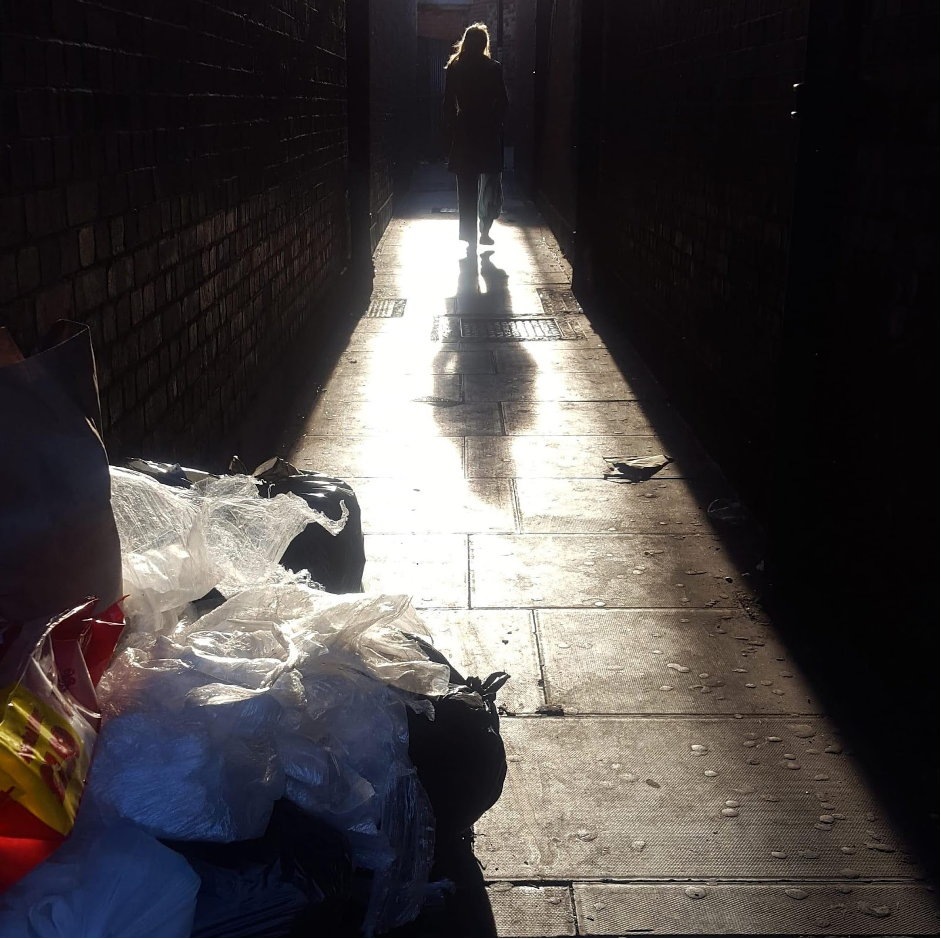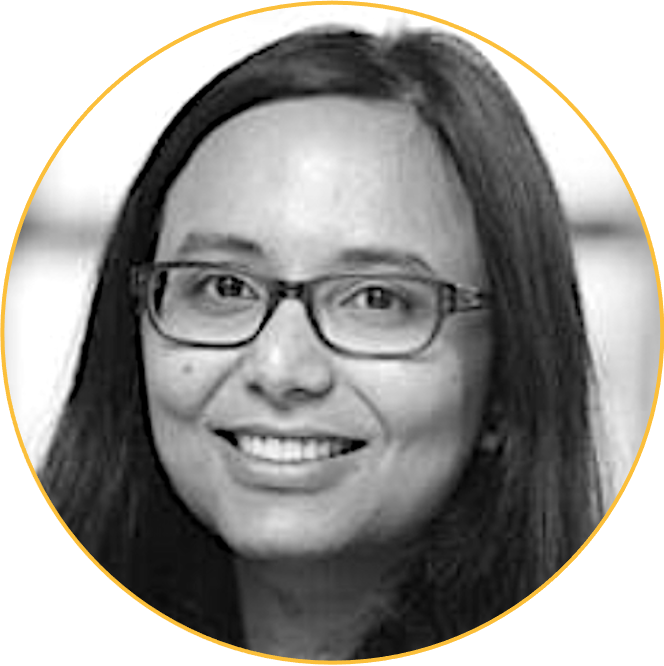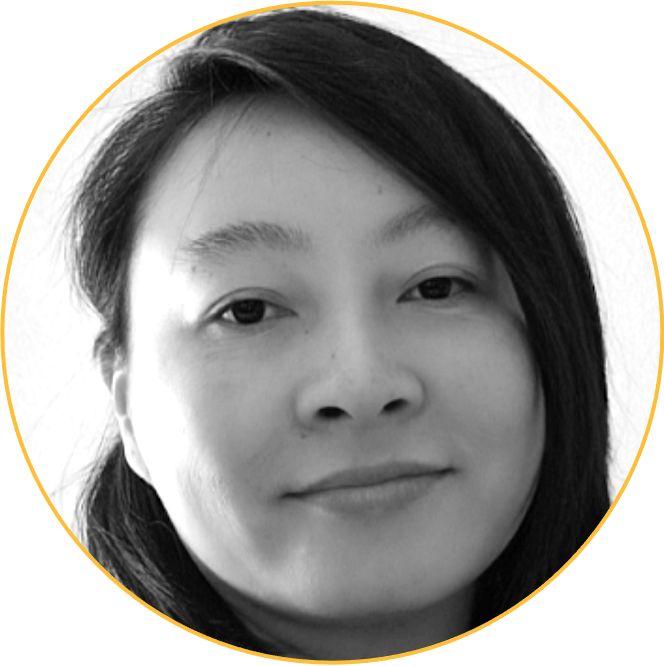In this paper, we explore how genuine reflective practice can take place in the age of generative artificial intelligence. We begin by describing the need for reflective practice in medical education, and how AI threatens this. We then share preliminary approaches to addressing this followed by hopes for a future where reflection in medical education is more relational, which our experience at the Contemplative Pedagogy Network (CPN) symposium suggests is possible.
Written by Camille Gajria and Yan-Ling Wong | PUBLISHED ON 21st June 2024 | Photo by getty images in conjunction with unsplash
Introduction
At the Contemplative Pedagogy Network (CPN) symposium in September 2023, we shared a photograph (Image 1) in a discussion about reflection. We reified reflective practice by discussing the light bouncing off the hair, the illumination of the shadow, and the garbage, and explored resulting metaphors. Is the person walking towards a stinking mess, or leaving it behind?

Alt text: a dark alley with bags of rubbish in the foreground,
and the silhouette of a woman with backlit hair in the background.
Reflective practice is a key requirement in medical curricula and professional regulation. Reasons for its primacy in medical education include:
- 1) Reflection allows adults to extract learning from experience.
- 2) The practice of medicine requires clinical reasoning, which is affected by emotion. Reflective practitioners can be aware of this emotion and account for it in their decision-making.
- 3) Reflection is a key step in critical thinking, which is another key skill for working in highly contextual and complex environments such as healthcare (Wald et al., 2012).
However, students and even educators find reflective practice frustrating because it is misinterpreted (Loughran, 2002) and becomes a tick-box activity. It can be perceived as woolly garbage in a tightly packed curriculum where time would be better used on other topics, and perhaps people wish to leave it behind. In previous years, we asked students to incorporate creative elements such as audio, video, images, and models, aiming for a more personal reflective experience. There are benefits to using creativity to reflect: it increases engagement and removes some cultural and linguistic barriers that can occur with purely factually written assignments. The act of creativity helps students develop their professional identity, creates a sense of belonging, and encourages self-care (Macaskill et al., 2023).
Generative artificial intelligence models are trained on big data to use patterns to create text, images, music, and computer code. Image 1 could be created by AI (although in this case, it isn’t!). This presents both challenges and opportunities to higher education (JISC, 2023). Students are using generative AI to produce written reflections, in an attempt to quickly appear to meet course requirements, and these generated pieces are not always distinguishable from authentically written pieces (Li et al., 2023). AI generated creative work has already won international art competitions. For example, “The Electrician” won the 2023 Sony World Photography awards and was created by Dall-E 2. Boris Eldagsen, the human who conceptualised and submitted the entry, rejected the prize (Grierson, 2023).
Educators face problems with identifying true authorship, and traditional plagiarism identification tools are no longer sufficient (Webb, 2023). AI models can produce different outputs each time, even if the same inputs are used; furthermore, they “learn” from previous inputs so only get better. I tell you I made image 1, and whose burden is it to prove it? This led us to an ethical issue- we noticed ourselves questioning the integrity of excellent student work. What if a student had been honest? Such a response could impact students’ psychological safety around staff and create a culture of fear and distrust.
Another artist, Jason Allen who won a prize for an AI created image in a state fair in Colorado defended his win, stating that it required his own creativity to produce the image (Roose, 2022). This speaks to the fact that prompt generation (creating the instructions for the AI model) still requires human thought and skill. Students can be asked to show their thought process for developing the instructions to create the image. As prompt generation is a creative act, and – as we have established, creativity engenders reflection- prompt generation can also be used as a reflective activity.
This would allow students to both use AI and maintain a culture of integrity. This approach also means students who do not consider themselves creative can learn to appreciate that they are. It also opens up opportunities for traditionally “non-creative” students to produce and enjoy the process of creative work. AI can be used to express thoughts, emotions, and ideas, supporting students with different abilities to produce professional writing. So, working with AI could support inclusive education. Perhaps walking towards the mess could itself be generative.
On the other hand, it could also contribute to educational inequalities. When writing this paper from another country, YLW found that some of the generative AI models were barred. This could impact students who travel home during holidays, in countries where AI is not available. In addition, as companies develop fee-structures for better features, there can be unfair advantages for individuals and organisations who are able to afford the technology and those who are not.
Good reflective tasks are authentic to the role students are preparing for. Nothing could be more relevant than a technology that is so rapidly transforming how doctors and patients will interact. Students can reflect on broader uses of AI in healthcare and impact on patient experience. Having experience of testing the boundaries of AI themselves can add richness and could put students at the cutting edge of finding creative solutions, changing their legitimate participation from peripheral (Lave & Wenger, 1991) to central.
Given the rapidly improving quality of AI for many aspects of medical practice (Qiu et al., 2023), students could question the value of training at all for professional practice. They could be anxious about graduating into a world where AI could be a threat to their role. Students may therefore be more motivated to learn how to coexist with AI in a professional context. This may therefore encourage a move away from surface learning (a problem we have with previous cohorts), as students need to grasp topics deeply enough to be able to critically assess the quality of AI outputs.
This would also mean educators move away from existing curricula and towards the technology that students graduating into the current environment need to grasp, making learning more relevant to current students. The pandemic forced organisations to push through bureaucracy and reticence, to foreground digital transformation. Similarly, the current AI-driven landscape is galvanising universities to rapidly rethink their teaching and assessment approaches.
Medical school curricula are packed and fast-paced. In some medical schools, there are few teachers who see the same student again, so there is no time for developing psychological safety for meaningful reflection. Students can more easily disregard the value of a teacher they meet just a few times, or not have enough time with them to draw out the value of their teaching. If a teacher knows a student well over time, they may be more able to identify whether work is truly produced by that student. Real-time conversations that build useful reflection will take place, with the dual effect of less room for plagiarism and more room for the reflective practice to be genuinely useful.
Longitudinal relationships between student and teacher lead to a stronger bond between them, such that both want to be honest with and develop each other. Other benefits include development of psychological safety, shared understanding, building trust and responsibilities (Fernald DH, 2001). This becomes important when integrating, embracing, and working with AI in an open way as it removes distrust amongst both student and educator. In addition, patients are a key form of teacher in medical education, and they too are currently mainly seen in a fragmented way. We hope and predict that AI will therefore drive a move to course structures that emphasise longitudinal relationships between students, teachers, and patients. These relationships could lead to movement away from a culture of assessment-driven competition (Scott, 2020), towards collaboration and values.
The CPN symposium modelled a reflective space by using techniques from contemplative pedagogy such as art-based exercises, slowness, and silence, in a psychologically safe setting. In this environment, space was permitted for meaningful reflection. When we discussed image 1 at the CPN symposium, different viewers had different ideas from it. Hearing others’ reflections deepened my understanding and appreciation, beyond what I knew when I snapped the photograph. So, reflecting in a peer group, perhaps with a facilitator, could support socially constructed learning (Aubrey, 2016). This is another way to mitigate against plagiarism in AI generated reflections. In a collective space we can respond and challenge each other towards deepened understanding which does not take place in AI-generated reflections.
Conclusion
In summary, we have described ways to use AI in reflective assignments, and even contribute to confidence, creativity, and community. We believe AI will deem the current assessment-driven approach to reflection invalid, and therefore trigger a shift to a more human reflective conversation triangulated by students, universities, and society. What is reflected in a mirror depends on who is looking. If all parties look at AI as a motivational challenge to improve students’ reflections, perhaps what looked like a mess could in fact be something valuable reflected back.
About the authors

Camille Gajria is an academic tutor at Imperial College School of Medicine and a senior lecturer in primary care at Queen Mary University of London. She advocates for lateral thinking in addressing challenges in professional formation, and values a critical approach to learning and teaching.

Yan-Ling Wong is a GP Training Programme Director for Targeted Intervention and Differential attainment and Curriculum editor for the Royal College of General Practitioners. She has worked in several medical schools in curriculum development, course design, delivery, and assessment. Her interests are in student-centred teaching and learning.
Views in this article are their own and do not necessarily represent the ethos of their employing institutions.
References
Aubrey, K. (2016) Vygotsky: An Early Social Constructivist. In: Understanding & Using Educational Theories. pp. 48–56.
Gajria, C. (2018) Image 1
Grierson, J. (2023) Photographer admits prize-winning image was AI-generated. [Online]. 2023. The Guardian. Available from: https://www.theguardian.com/technology/2023/apr/17/photographer-admits-prize-winning-image-was-ai-generated [Accessed: 27 December 2023].
Fernald DH, Staudenmaier AC, Tressler CJ, et al. (2001) Student perspectives on primary care preceptorships: enhancing the medical student preceptorship learning environment. Teach Learn Med. 2001;13:13–20
JISC (2023) AI in tertiary education: A summary of the current state of play. JISC
Lave, J. & Wenger, E. (1991) Situated learning: Legitimate peripheral learning. Cambridge, Cambridge University Press.
Li, Y., Sha, L., Yan, L., Lin, J., et al. (2023) Can large language models write reflectively. Computers and Education: Artificial Intelligence. 4 (April). Available from: doi:10.1016/j.caeai.2023.100140.
Loughran, J.J. (2002) Effective reflective practice in search of meaning in learning about teaching. Journal of Teacher Education. 53 (1), 33–43. Available from: doi:10.1177/0022487102053001004.
Macaskill, W., Chua, W.J., Woodall, H. & Pinidiyapathirage, J. (2023) Beyond the Written Reflection: A Systematic Review and Qualitative Synthesis of Creative Approaches to Reflective Learning Amongst Medical Students. Perspectives on Medical Education. 12 (1), 361–371. Available from: doi:10.5334/pme.914.
Qiu, J., Li, L., Sun, J., Peng, J., et al. (2023) Large AI Models in Health Informatics: Applications, Challenges, and the Future. IEEE Journal of Biomedical and Health Informatics. 27 (12), 6074–6087. Available from: doi:10.1109/JBHI.2023.3316750.
Roose, K. (2022) An A. I. generated picture won an art prize. Artists aren’t happy. [Online]. 2022. The New York Times. Available from: https://www.nytimes.com/2022/09/02/technology/ai-artificial-intelligence-artists.html [Accessed: 27 December 2023].
Scott, I.M. (2020) Beyond ‘driving’: The relationship between assessment, performance and learning. Medical Education. 54 (1), 54–59. Available from: doi:10.1111/medu.13935.
Wald, H.S., Borkan, J.M., Taylor, J.S., Anthony, D., et al. (2012) Fostering and evaluating reflective capacity in medical education: Developing the REFLECT rubric for assessing reflective writing. Academic Medicine. 87 (1), 41–50. Available from: doi:10.1097/ACM.0b013e31823b55fa.
Webb, M. (2023). AI Detection – Latest Recommendations. National centre for AI. Available at: https://nationalcentreforai.jiscinvolve.org/wp/2023/09/18/ai-detection-latest-recommendations/ (Accessed 10th January 2024)

